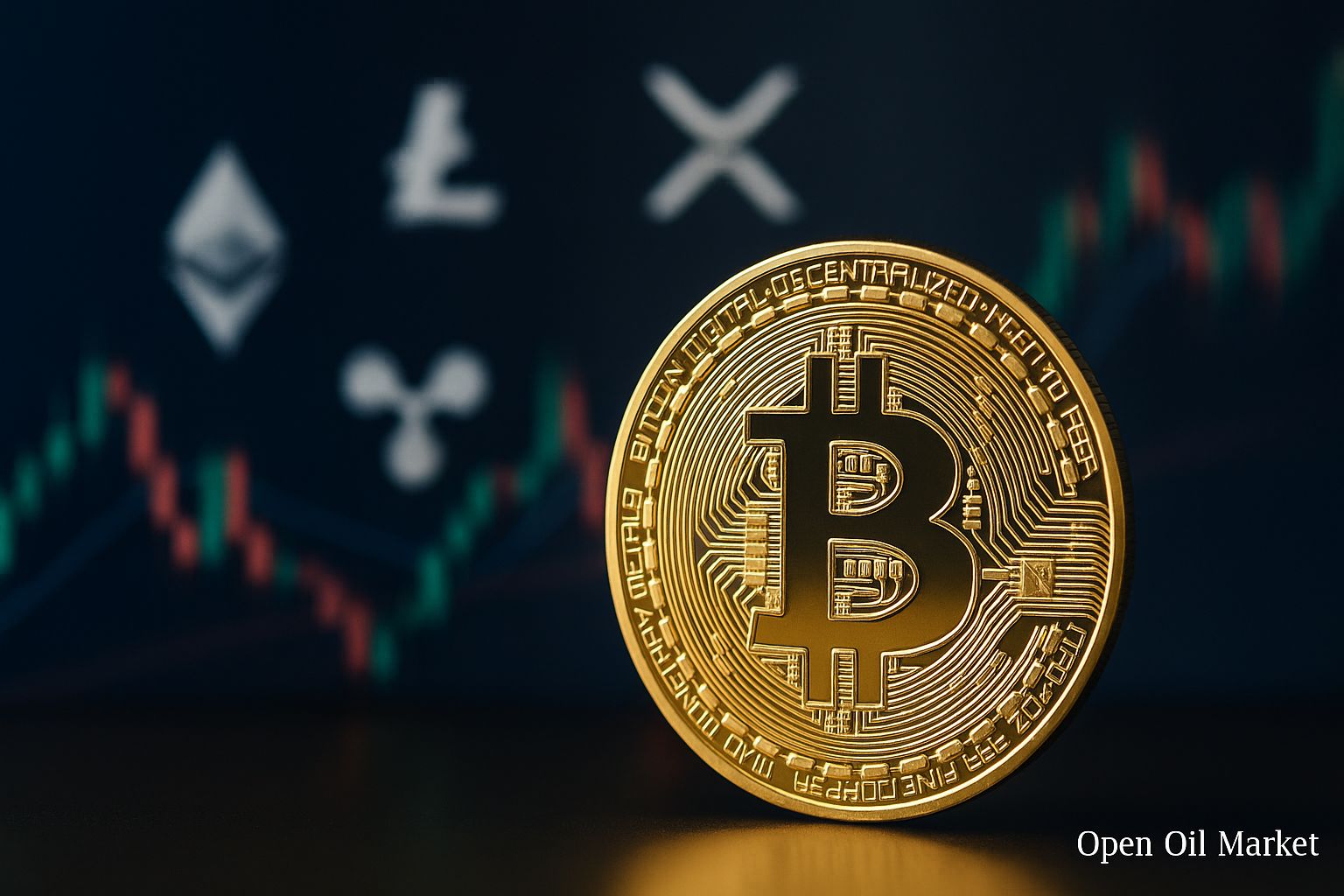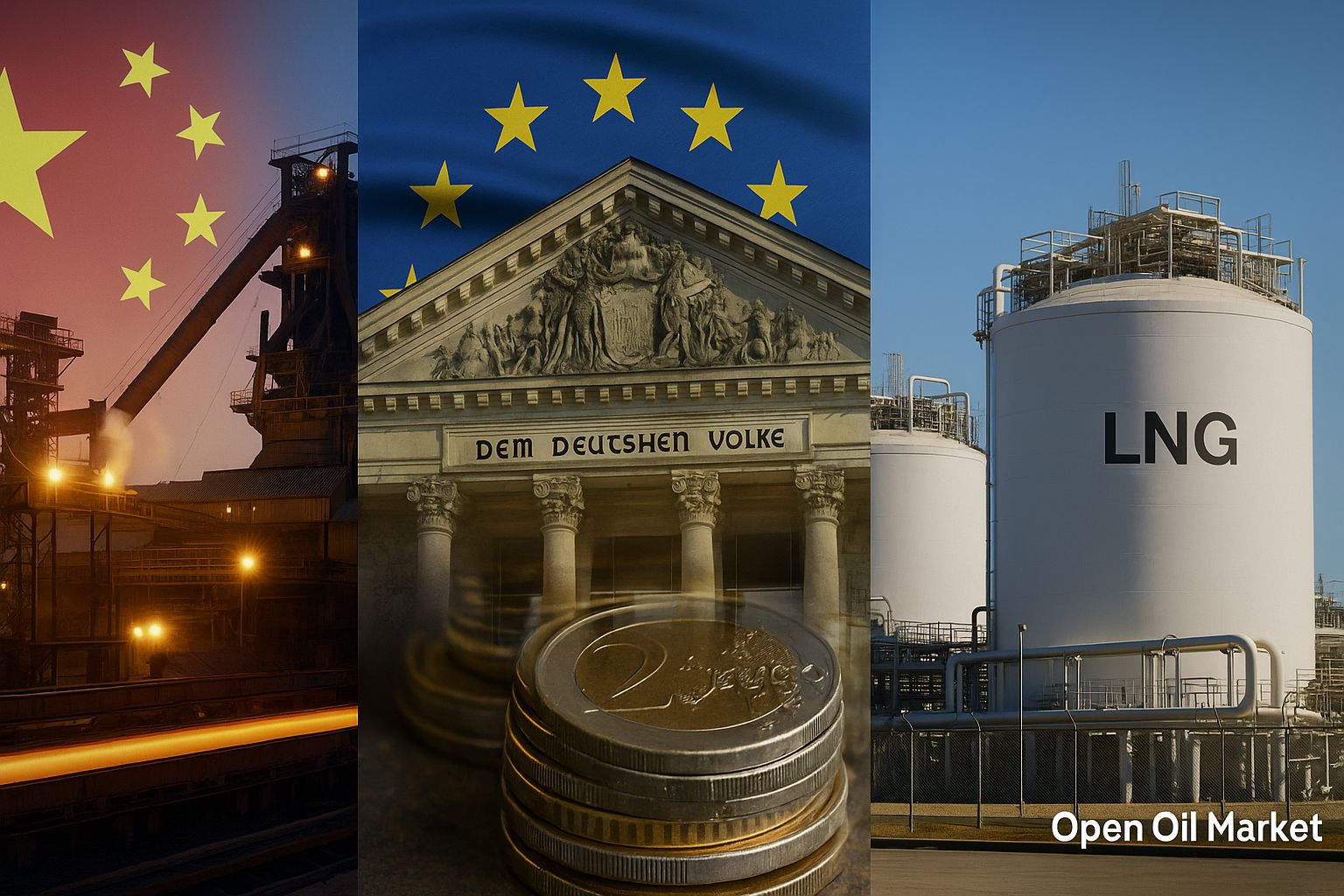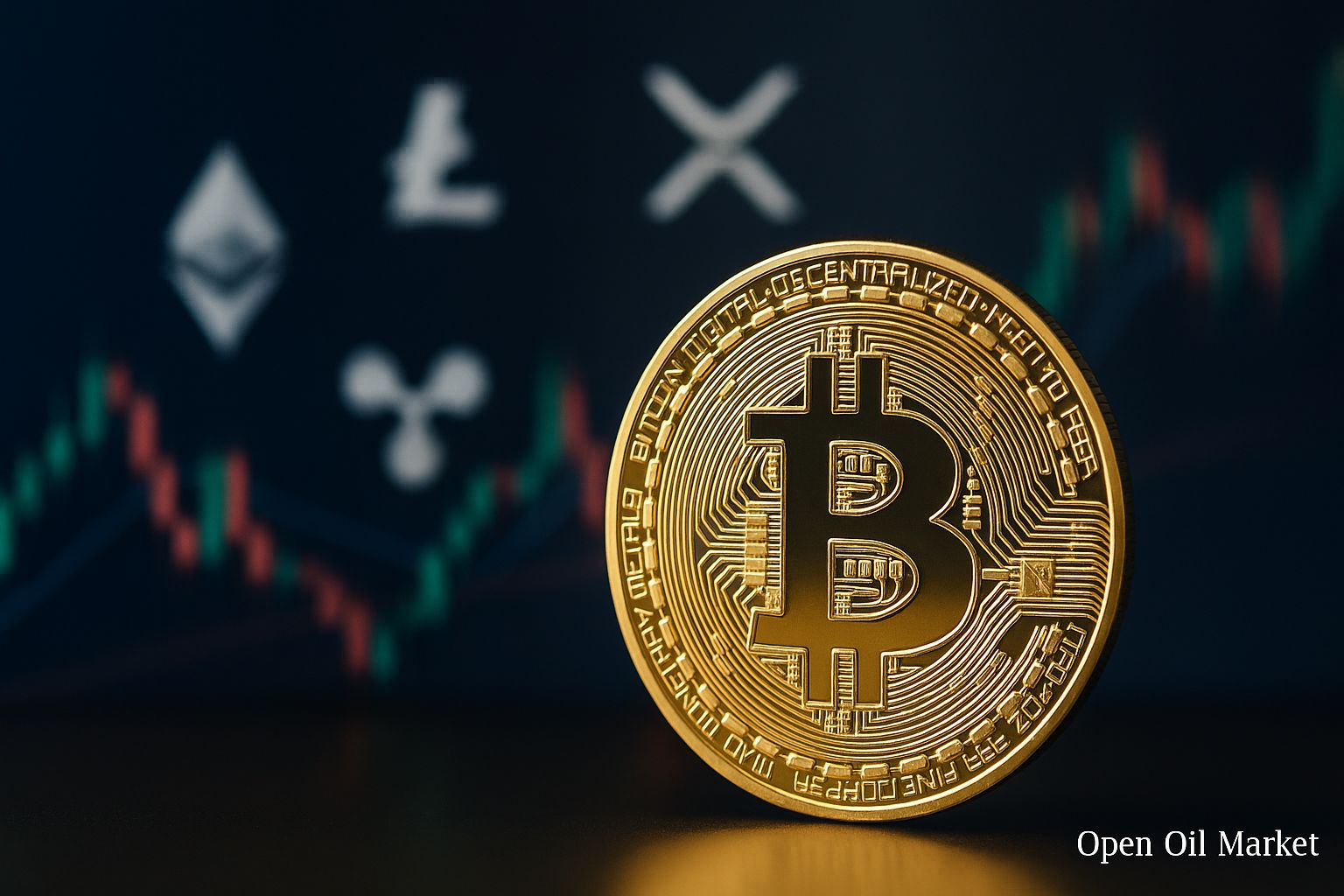
Current Cryptocurrency News as of 10 November 2025: Bitcoin Holds Around $100,000, Ripple Awaits XRP ETF Launch, Growing Interest in DeFi, and Market Consolidation in NFTs. A Review of the Top 10 Cryptocurrencies and Key Trends.
The cryptocurrency market enters a new week in a state of cautious equilibrium. Following an unprecedented rally in October, investors are witnessing a correction: the total market capitalisation now stands at around $3.5 trillion, slightly below last month’s peak values. Bitcoin hovers near the psychologically significant level of $100,000, while the dynamics of altcoins remain mixed. Let us explore in more detail the key events and trends impacting the cryptocurrency market as of the morning of 10 November 2025.
Bitcoin Near $100,000 After Record Rally
The flagship cryptocurrency, Bitcoin (BTC), reached an all-time high in October (exceeding $120,000), but following that there has been a moderate correction. Over the weekend, BTC traded around $102,000, occasionally dipping below the $100,000 mark under profit-taking pressure. The current price is holding between $100,000–$102,000, approximately 20% lower than its recent peak. Despite this pullback, Bitcoin continues to demonstrate a phenomenal year-to-date growth, maintaining a dominant share of around 58% of the total cryptocurrency market capitalisation. Volatility has increased: the fear and greed index has dropped into the "fear" zone, reflecting a shift in sentiment from euphoria to caution.
Fundamental factors for Bitcoin remain positive. In the USA, official support for cryptocurrencies is strengthening: President Donald Trump has announced intentions to make the States a "Bitcoin superpower," and Senator Cynthia Lummis proposed the creation of a strategic reserve in BTC to bolster the country's financial balance. Institutional demand is also on the rise — following the launch of spot BTC ETFs, leading funds are once again seeing capital inflows. Thus, even amidst a temporary slowdown in growth, Bitcoin remains an attractive asset against the backdrop of expectations for an easing of the Federal Reserve's monetary policy and its status as "digital gold" in times of economic uncertainty.
Top 10 Popular Cryptocurrencies: Key Trends
Beyond Bitcoin, other leading digital currencies are noteworthy in the market. Below is a current overview of the top 10 cryptocurrencies by market capitalisation and recent events:
- Bitcoin (BTC) – ~$100,000. Bitcoin continues to dominate the market, holding a capitalisation of around $2 trillion. Following record highs, consolidation is now observed.
- Ethereum (ETH) – ~$3,300. Ethereum remains the largest altcoin and the foundational platform for DeFi and NFTs. The price of ETH has corrected over the week (previously exceeding $3,500), but the network continues to attract significant demand thanks to upgrades and the development of Layer-2 solutions.
- Binance Coin (BNB) – ~$950. The native token of the Binance exchange is nearing its historical maximum (around $1,000). BNB is supported by the extensive ecosystem of Binance Smart Chain and the services of the Binance exchange, demonstrating robust growth despite certain regulatory risks surrounding the company.
- Ripple (XRP) – ~$2.20. XRP is among the leaders in dynamics due to expectations of the launch of the first spot ETFs on this token by mid-November. Major investment firms have submitted corresponding applications, and the market is pricing in the possibility of regulatory approval. Additionally, Ripple announced a partnership with Mastercard to utilise its stablecoin (RLUSD) in payments at the Swell conference, enhancing investor confidence in the XRP ecosystem.
- Solana (SOL) – ~$158. Solana has established itself as one of the largest platforms for smart contracts. SOL has more than doubled over the year, recovering from last year's difficulties. Recently, the price surpassed $150, although volatility was observed last week. The Solana ecosystem is actively developing and attracting DeFi and NFT projects, sustaining interest in the coin.
- Dogecoin (DOGE) – ~$0.16. The meme cryptocurrency Dogecoin continues to rank among the top due to its strong community and support from high-profile individuals. Elon Musk recently attracted attention to DOGE by hinting at the imminent launch of the "DOGE-1" mission to the Moon. In this context, Dogecoin's price received a short-term boost, although it later partially retraced.
- Tron (TRX) – ~$0.28. The Tron blockchain remains among the leaders in popularity, particularly in Asia. TRX has significantly increased in recent months, with the network’s capitalisation estimated at around $27 billion. The platform is known for its low fees and is actively used for stablecoin transactions.
- Cardano (ADA) – ~$0.54. The Cardano platform continues its steady development and the implementation of new technologies. The ADA coin is trading around $0.50, showing moderate growth over the year. The Cardano community remains highly active; however, in the short term, ADA mirrors the market dynamics without sharp spikes.
- Litecoin (LTC) – ~$250. One of the oldest altcoins, Litecoin, is once again attracting heightened interest from investors. LTC is often referred to as "digital silver," and its price has risen significantly in 2025. The launch of new investment products based on Litecoin further supports its price. Currently, LTC ranks in the top ten by capitalisation.
- Polkadot (DOT) – ~$15. The Polkadot project focuses on uniting different blockchains. While the DOT token has not demonstrated explosive growth in recent months and its capitalisation is far from the 2021 peaks, Polkadot remains a significant altcoin. The development of parachains and new projects on the Polkadot network persists in sustaining interest in the DOT ecosystem.
DeFi: Sector Dynamics and Capital Attraction
The decentralised finance (DeFi) sector is experiencing active growth in 2025. The total value locked (TVL) in DeFi protocols has reached around $130 billion, doubling over the year and nearing record levels. Investors are once again engaging DeFi platforms for staking, lending, and trading, while the trend towards the tokenisation of real-world assets (RWA) promises further capital inflow. At the same time, a series of recent hacks and fraudulent schemes serve as a reminder of the risks involved: regulators are already discussing tightening security requirements. Generally, significant players continue to enter DeFi, which reflects a growing trust in the sector, along with an increase in scrutiny from regulatory bodies.
NFT: The Decline of Hype and New Opportunities
By the end of 2025, the non-fungible token (NFT) market has noticeably cooled. Monthly sales volumes of NFTs have decreased by almost half compared to early autumn, with sector capitalisation falling from approximately $6.6 billion to around $3.5 billion. The boom of collectible tokens has subsided, with many top collections losing 20–30% of their value. However, the NFT industry is exploring practical scenarios: major brands are releasing loyalty tokens and digital items for games, enhancing the real value of NFTs. The market is filtering out weak projects, and the technology is gradually embedding itself into business models beyond purely speculative realms, laying the groundwork for future growth.
Regulation and Market Oversight
Worldwide, the establishment of rules for the cryptocurrency industry is accelerating, particularly regarding stablecoins and the operation of exchanges. Canada and the UK have introduced regulations for stablecoins (transparent reserves, licensing of issuers, etc.), seeking to integrate stablecoins into the financial system. Meanwhile, following events in 2022, regulators are demanding enhanced oversight: in the USA, restrictions on mining and stricter rules for crypto exchanges are under discussion, law enforcement is pursuing anonymous crypto services, and in Europe, major exchanges face multi-million dollar fines for non-compliance with AML norms.
Governments are striving to balance innovation support with risk management. Pro-cryptocurrency measures (for instance, the launch of state mining programmes in Japan or the establishment of a crypto fund in Kazakhstan) are combined with heightened demands for transparency and security. In the long term, clearer rules will reduce uncertainty for investors, although in the short term, regulatory news can cause spikes in market volatility.
Institutional and Corporate Trends
Large capital continues to explore cryptocurrencies. The success of Bitcoin ETFs has prompted Wall Street to launch funds including other assets (ETH, XRP, etc.), bringing the digital currency market closer to traditional investors. Banks and financial companies are increasingly using blockchain to accelerate transactions and are offering clients services for the custody of crypto assets, while some pension funds are adding Bitcoin to their reserves for risk hedging.
Concurrently, crypto firms are increasing influence in traditional finance. For instance, MicroStrategy is raising additional funds to purchase Bitcoins, demonstrating business confidence in the long-term value of BTC. The line between the crypto industry and traditional finance is blurring – and the integration of the two realms is making the market more liquid and resilient.
Outlook: What’s Next?
In the coming weeks, the cryptocurrency market will balance between a phase of correction and the potential for new growth. Much will depend on external factors and news. Below are the key signals investors should monitor:
- New ETFs: Approval of spot ETFs for Ethereum or XRP could attract additional capital and enhance trust in altcoins.
- Macroeconomics: The Federal Reserve's monetary policy (potential interest rate cuts) and fiscal issues in the USA affect risk appetite. Favorable decisions could restore interest in crypto assets.
- Regulatory Steps: The emergence of clear laws regarding stablecoins and the outcome of major court cases (concerning exchanges and platforms) will set the tone of authorities' relationship with the industry. Positive news in this area could alleviate uncertainty.
- Bitcoin Performance: BTC's ability to hold above $100,000 or drop below it will serve as a marker for the entire market. A strong Bitcoin will pull up altcoins, while a significant downturn will heighten the flight to safety.
Despite the recent turbulence, by the end of 2025, the crypto industry has become more mature and integrated into global markets. Institutional participation and clear regulations are gradually increasing the industry’s reliability. With a prudent approach, investors may seize new growth opportunities; however, caution must not be forgotten – risks in this market remain high.




